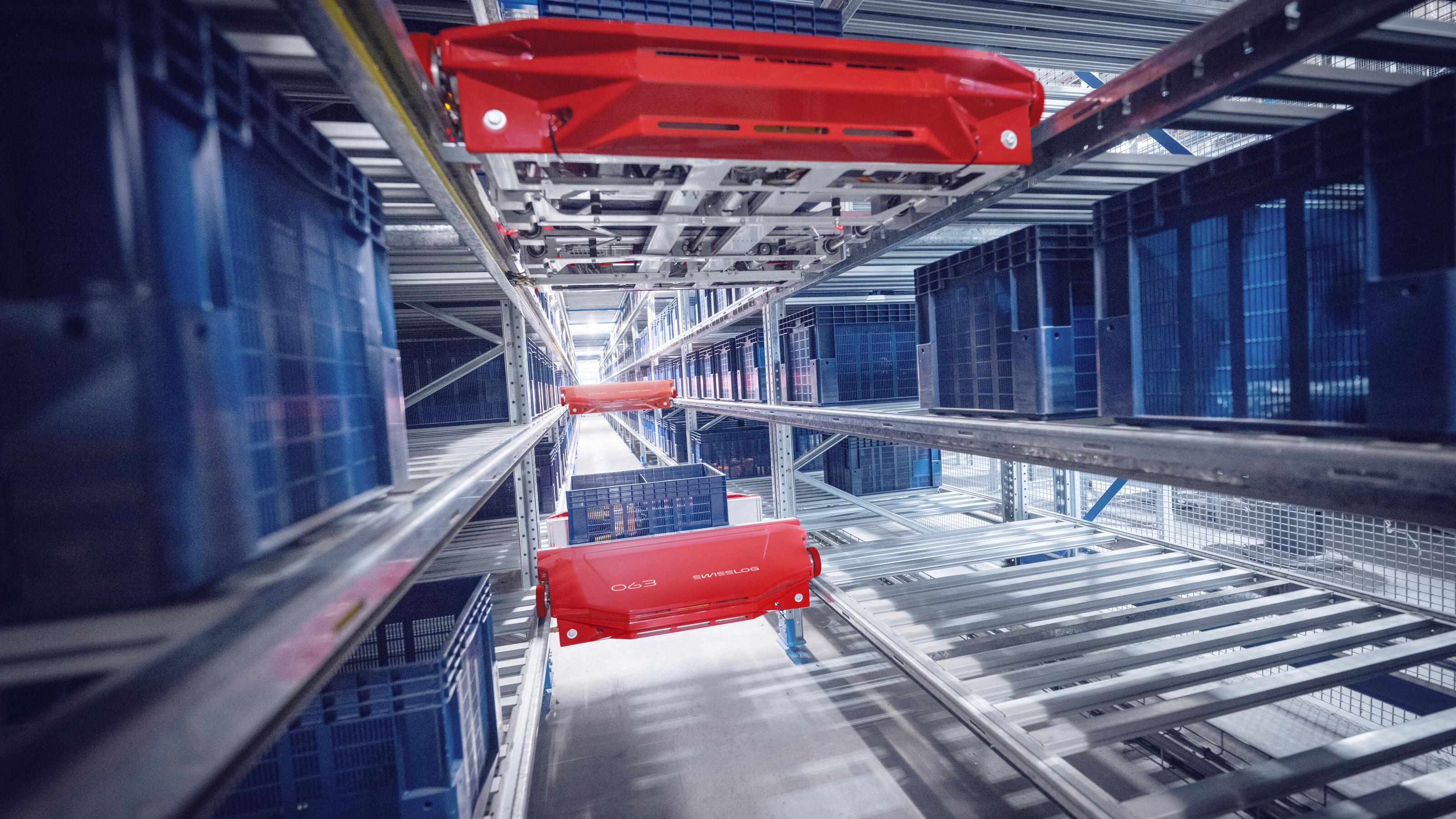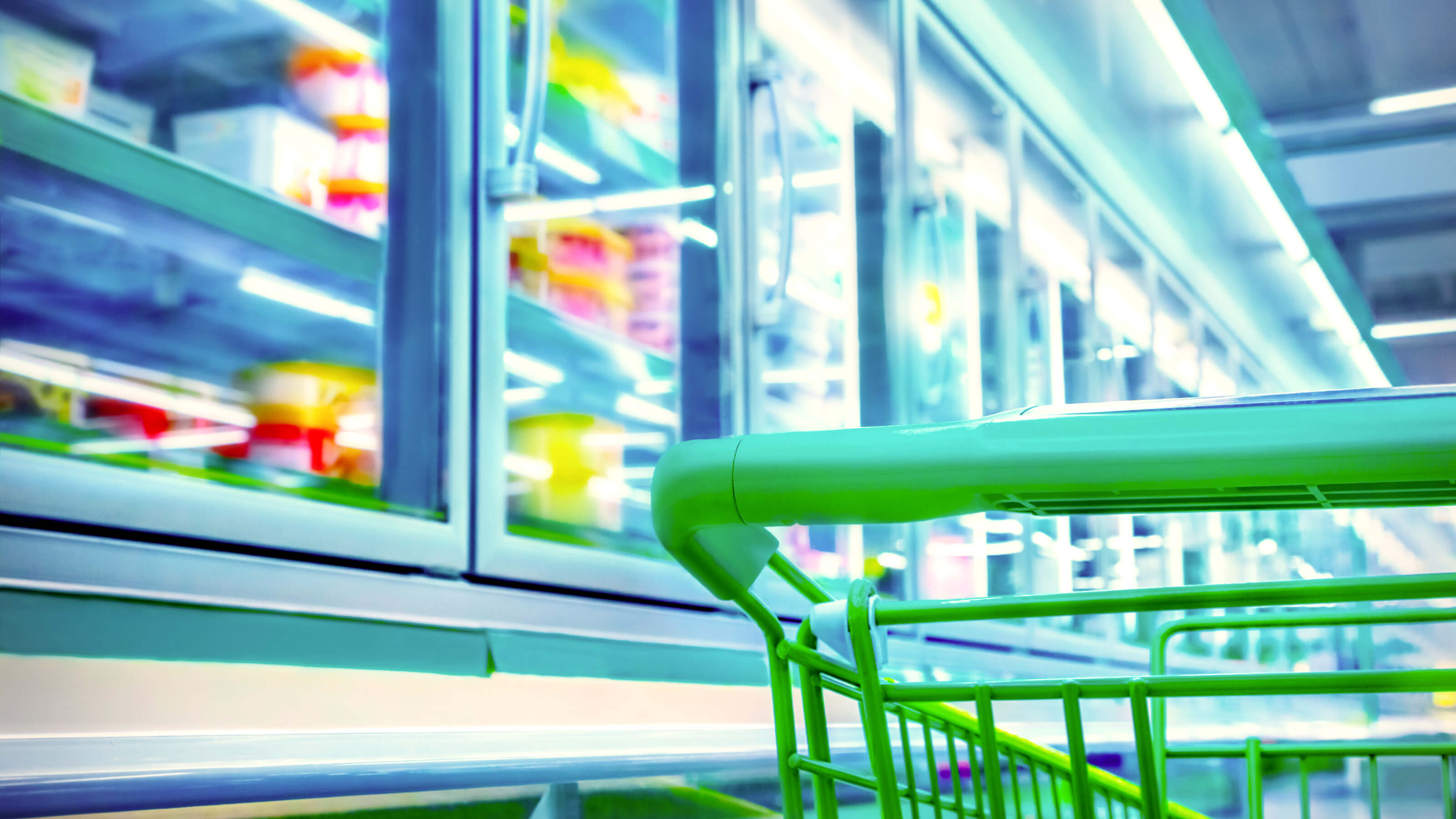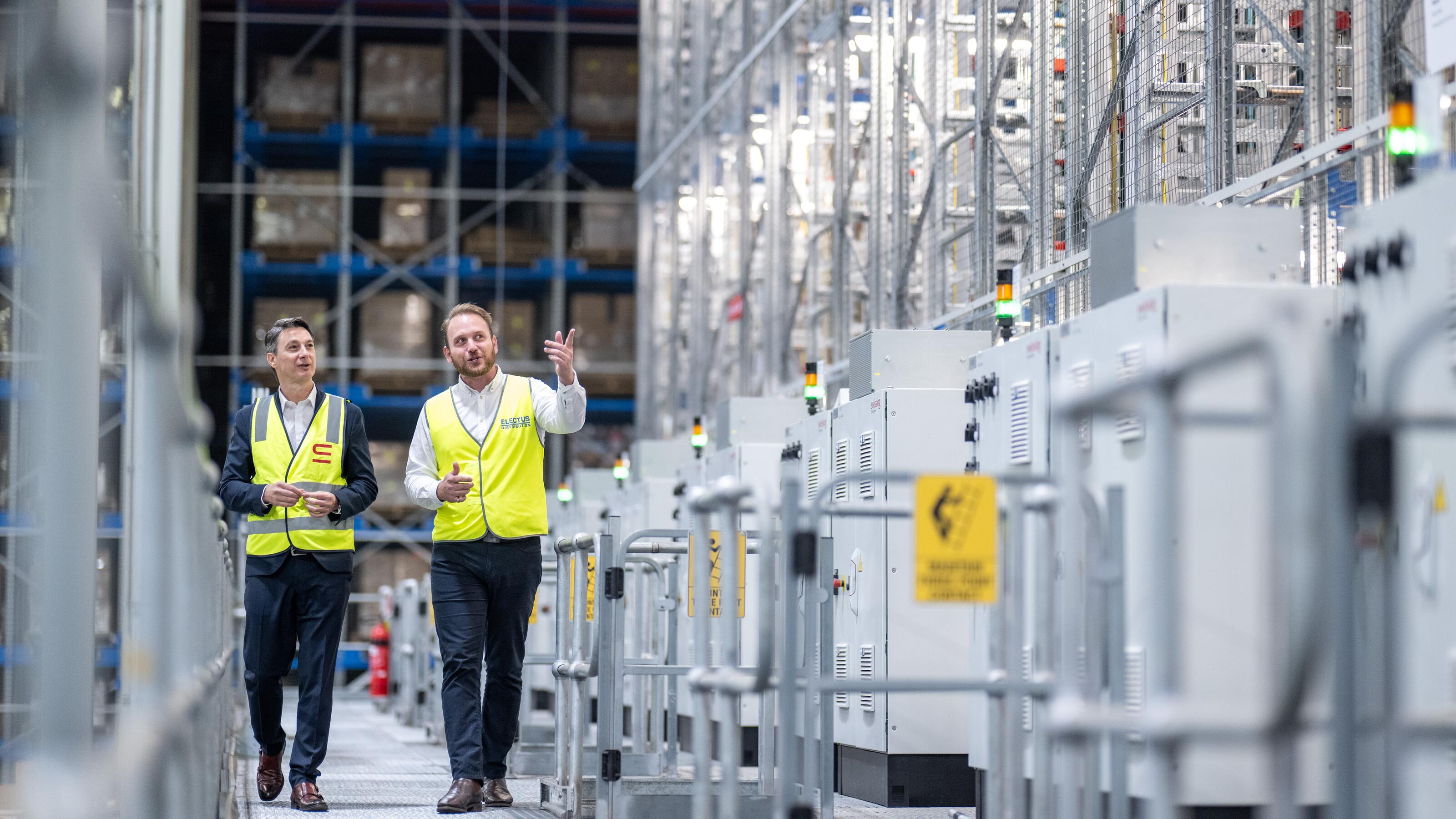Selección de software para la automatización de almacenes de alimentos y bebidas

Con el software adecuado, las empresas pueden:
- Reducir su inversión inicial sin comprometer la flexibilidad futura.
- Mejorar la gestión de inventarios de forma que se reduzcan los costes.
- Optimizar el servicio a los clientes y potenciar la eficiencia y flexibilidad operativa diaria.
Por eso es esencial evaluar cuidadosamente las capacidades del software antes de seleccionar una solución de automatización de almacenes.
Los fabricantes de alimentos y bebidas suelen entender que la automatización de almacenes puede aumentar la densidad de almacenamiento y reducir la mano de obra necesaria para atender los pedidos. En consecuencia, estos factores tienden a dominar los argumentos comerciales a favor de la automatización. Sin embargo, no abarcan todo el valor que puede aportar la automatización. Gran parte del valor añadido que puede lograrse es posible gracias al software que controla la solución de automatización e integra perfectamente la automatización en los procesos holísticos del almacén y en los procesos de la cadena de suministro y entrega.
Cómo el software aumenta el valor empresarial de la automatización de almacenes

Los sistemas de gestión de almacenes (SGA) desempeñan un papel fundamental en la gestión del inventario, la mano de obra y los costes del almacén. Sin embargo, estos sistemas no son capaces de controlar el funcionamiento de sistemas de automatización como un ASRS. Para ello, se necesita un sistema de control de la automatización (ACS) y el ACS adecuado puede aportar valor añadido a la automatización mediante la digitalización ascendente desde el nivel de la planta de producción.
Comienza con funciones que reducen la inversión en automatización al eliminar la necesidad de sobredimensionar los sistemas debido a una gestión ineficaz y un rendimiento inferior al óptimo. Por ejemplo, el software SynQ de Swisslog utiliza algoritmos que optimizan la gestión ASRS para reducir los tiempos de espera y entregar los palets en la secuencia necesaria para un flujo de materiales eficiente. Esto permite que las soluciones de tamaño adecuado ofrezcan niveles de velocidad y rendimiento que igualan o superan a una solución sobredimensionada.
La digitalización también proporciona:
- Una mayor inteligencia en la gestión de inventarios y pedidos. Al permitir un seguimiento preciso de la ubicación y los movimientos de los artículos, el ACS puede eliminar prácticamente los errores humanos, como la colocación o el recuento erróneos de artículos, reduciendo las roturas de stock y el exceso de existencias.
- Una gestión más flexible y granular de la vida útil de los productos. Gracias a la gestión inteligente de inventarios y pedidos, un ACS puede calcular la vida útil restante en el momento de la entrega de cada pedido, lo que permite recuperar el producto de un pedido concreto en función de los plazos de entrega previstos y de la prioridad del cliente.
- Mejora la velocidad y la previsibilidad de la preparación de los pedidos mediante la optimización de la preparación de pedidos y las rutas en función de la prioridad de los pedidos, la disponibilidad de existencias y la capacidad de los recursos. El objetivo no es solo automatizar los procesos manuales, sino diseñar procesos que funcionen con la automatización y sean, por tanto, más eficientes.
A través de estas capacidades, el software de control de automatización adecuado puede reforzar el argumento empresarial a favor de la automatización reduciendo la inversión de capital necesaria para implantarla, reduciendo los costes de inventario, mejorando la calidad y la precisión de los pedidos y mejorando los niveles de servicio al cliente.

Cómo el software mejora las operaciones en los almacenes automatizados
El software ACS también aporta un importante valor operativo cotidiano al gestionar eficazmente la variabilidad de la demanda, apoyar una mejor toma de decisiones y agilizar la respuesta a eventos como la retirada de productos.
Software capable of controlling all components of an automation solution – including the ASRS, conveyors, AGVs and palletizing systems – as well as manual processes can synchronize processes and dynamically balance workflows and resources to eliminate bottlenecks and keep materials moving during demand peaks. The visibility and analytics provided by the software can also simplify management and allow managers to effectively use warehouse data to monitor and improve operations.
Un software capaz de controlar todos los componentes de una solución de automatización -incluidos el ASRS, los transportadores, los AGV y los sistemas de paletización-, así como los procesos manuales, puede sincronizar los procesos y equilibrar dinámicamente los flujos de trabajo y los recursos para eliminar los cuellos de botella y mantener los materiales en movimiento durante los picos de demanda. La visibilidad y los análisis que proporciona el software también pueden simplificar la gestión y posibilita a los responsables utilizar eficazmente los datos del almacén para supervisar y mejorar las operaciones.
El software Swisslog SynQ, por ejemplo, permite a los responsables supervisar los indicadores clave de rendimiento mediante la visualización en tiempo real de los KPI. También pueden utilizar una sombra digital en 3D del almacén y sus operaciones para supervisar los procesos y acceder fácilmente a información detallada sobre productos y pedidos.
En paralelo, puede ayudar a mitigar el impacto y reducir los costes de una retirada. De nuevo, utilizando SynQ como ejemplo, el sistema puede localizar rápidamente los productos afectados -incluidos los ya enviados- en función del lote, la fecha de caducidad u otra información, y bloquear y almacenar los productos afectados mientras se resuelven los problemas.
En resumen, el software de apoyo a la automatización ofrece a directivos y operarios la capacidad de:
- Mejorar la eficacia y flexibilidad operativa.
- Adaptar dinámicamente los recursos y procesos a la demanda.
Funciones imprescindibles del software de control de automatización en alimentación y bebidas

No todas las plataformas de control de automatización pueden ofrecer las funciones descritas anteriormente, y puede resultar difícil separar la publicidad de la funcionalidad real en el proceso de selección.
Como punto de partida en el proceso de evaluación, busca estas capacidades:
- Arquitectura de plataforma modular preconfigurada: Para maximizar el valor de tu solución, te interesará una plataforma de software modular que integre el control de la automatización, la ejecución del almacén y las capacidades de gestión del almacén. Esto te permite aprovechar las capacidades de los sistemas de almacén existentes al tiempo que cierras las brechas en esos sistemas que están limitando la digitalización, impidiendo la visibilidad de las operaciones e inhibiendo la sincronización de procesos y la orquestación de recursos. Las preconfiguraciones específicas para el sector y la automatización reducen el riesgo y los tiempos de ejecución de los proyectos, aumentando el valor de la amplia experiencia en el sector de la alimentación y las bebidas.
- Gestión flexible e inteligente de inventarios y pedidos: Los fabricantes de alimentos y bebidas tienen requisitos de gestión de inventario diferentes a los de otras industrias, así que asegúrate de que tu software puede satisfacer tus necesidades específicas. ¿Puede gestionar el inventario en función del lote, la fecha de caducidad, la fecha de consumo preferente o cualquier otro factor importante para usted y sus clientes? ¿Y puede integrar de forma inteligente la gestión de inventarios y pedidos para satisfacer las expectativas de los clientes en cuanto a la caducidad del producto en el momento de la entrega?
- Orquestación de recursos y optimización de procesos: Un sistema de control de la automatización que sólo controla el ASRS aísla el ASRS de otros procesos del almacén. Selecciona un software capaz de controlar todos los componentes de tu solución de automatización, así como los procesos manuales.
-
Trazabilidad, visibilidad y análisis: La trazabilidad es imprescindible para los fabricantes de alimentos y bebidas, así que asegúrate de que tu software permite un seguimiento detallado de los movimientos dentro del almacén, tanto en términos de cambios de existencias como de ubicación física. También será necesaria una plataforma que simplifique la recopilación y el análisis de datos para garantizar una gestión eficaz de las operaciones del almacén. Los fabricantes que han implantado soluciones que ofrecen visualización en 3D de las operaciones del almacén han descubierto que esta capacidad es inestimable en la gestión diaria del almacén.
- Interfaz de usuario intuitiva y coherente: La forma en que los operarios y directivos interactúan con su solución puede tener un impacto significativo en la productividad. Evalúa la interfaz de usuario en términos de facilidad de uso y coherencia entre los componentes de una solución. En muchos almacenes, también puede ser muy valiosa la capacidad de admitir varios idiomas y ofrecer información a los operarios en su idioma preferido.
-
Madurez y seguridad: Más allá de la funcionalidad, dedica tiempo a aprender cómo se desarrolla y gestiona el software, ya que estos procesos «entre bastidores» pueden tener un impacto directo en las operaciones durante la vida útil de su solución. Asegúrate de que tu proveedor tiene una hoja de ruta de producto plurianual, integra la seguridad en los procesos de diseño e implantación y cuenta con un plan bien definido de actualizaciones técnicas. Averigüa también si se utiliza la misma plataforma en todas las regiones. Una plataforma global permite la estandarización del software en todas las ubicaciones y que el proveedor pueda concentrar sus recursos en avanzar y dar soporte a una plataforma en lugar de diluir los recursos y la experiencia en múltiples sistemas.
Sacar más partido a la automatización de almacenes en alimentación y bebidas
Swisslog cuenta con décadas de experiencia en el suministro de soluciones de automatización para fabricantes de alimentos y bebidas, una experiencia que se plasma en nuestra plataforma de software modular y preconfigurada SynQ. Y es que ofrece la funcionalidad, inteligencia y visibilidad que los fabricantes de alimentos y bebidas necesitan para maximizar el valor empresarial y operativo de la automatización de almacenes.
Para más información, contacta con nosotros.












